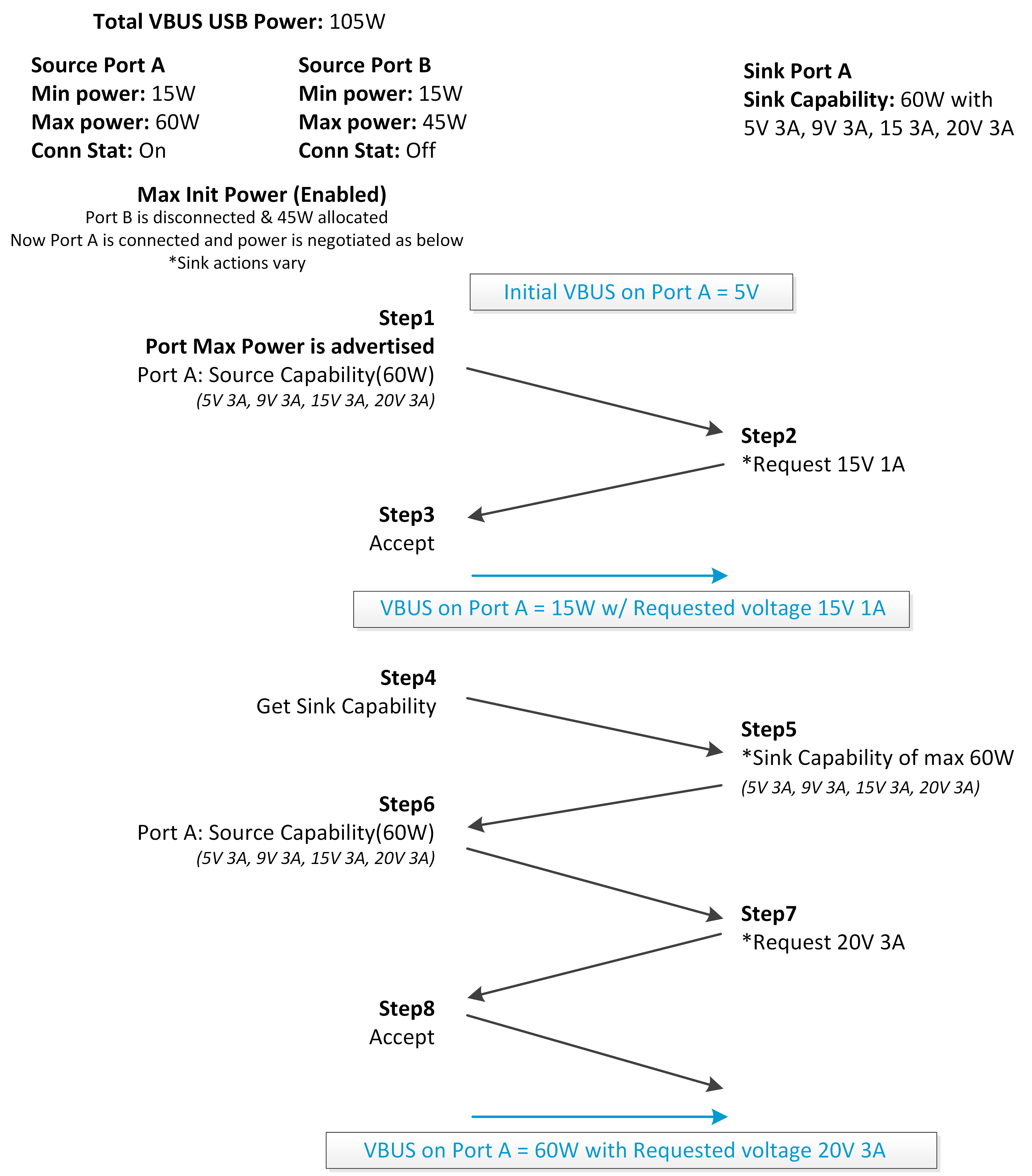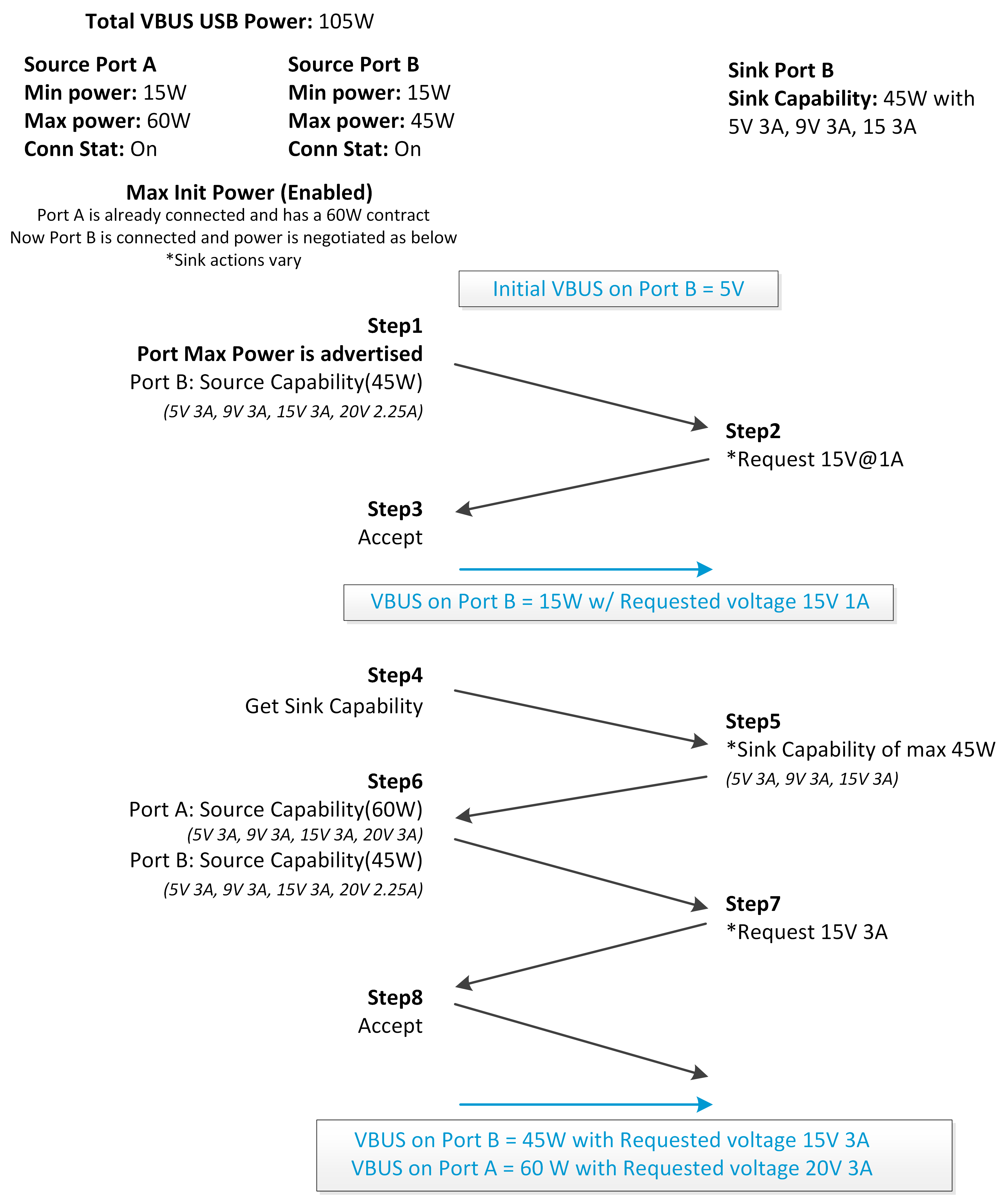SLVAFG6B December 2022 – November 2024 TPS25762-Q1 , TPS25763-Q1 , TPS25772-Q1
5.1 Assured Capacity Policy Example
This section provides examples of
power distribution when Source ports are configured as Assured Capacity Policy and Max
Init Power mode is selected. Table 5-10 shows the SPM Engine parameters used in this section's example.
 Figure 5-1 Assured Capacity Policy
Negotiation Flow - Port A Connected
Figure 5-1 Assured Capacity Policy
Negotiation Flow - Port A Connected
 Figure 5-2 Assured Capacity Policy
Negotiation Flow - Port B Connected
Figure 5-2 Assured Capacity Policy
Negotiation Flow - Port B Connected
Table 5-1 SPM Engine Parameters -
Assured Capacity Policy Example
| SPM Engine Parameters | Configuration | Description |
|---|---|---|
| System Max Power | 105W(1) | Total system power capacity allocated for Port A and B |
| Port A Max Power | 60W | Maximum Port A Power |
| Port B Max Power | 45W | Maximum Port B Power |
| Port A Min Power | 15W | Minimum Port A power |
| Port B Min Power | 15W | Minimum Port B power |
| Assured Mode | Max Init Power | Source initially sends Source Capabilities advertising max power |
(1) The System Max Power is 105W; the
sum of Port A Max Power and Port B Max Power.
Three example scenarios of Assured Capacity Policy are listed in Table 5-2. Note that the power distributed to each port is independent of the other port's status as is expected with the Assured Capacity Policy.
Table 5-2 Assured Capacity Policy
Example
| Port A | Port B | |
|---|---|---|
| Initially Allocated | 60W | 45W |
| Scenario 1: Port A connects to a Sink that requires 27 W. Port B is unconnected. | ||
| Power Required by Sink | 27W | |
| Power Distributed to Sink | 27W | |
| Scenario 2: Port B connects to a Sink that requires 45 W. | ||
| Power Required by Sink | 27W | 45W |
| Power Distributed to Sinks | 27W | 45W |
| Scenario 3: Port A changes the requirement to 60 W. | ||
| Power Required by Sink | 60W | 45W |
| Power Distributed to Sinks | 60W | 45W |
The following diagrams show the flow of the PD negotiation when Assured Capacity Policy is enabled and where one Sink first connects to Port A (Figure 5-1) and a second Sink connects to Port B (Figure 5-2).
 Figure 5-1 Assured Capacity Policy
Negotiation Flow - Port A Connected
Figure 5-1 Assured Capacity Policy
Negotiation Flow - Port A Connected Figure 5-2 Assured Capacity Policy
Negotiation Flow - Port B Connected
Figure 5-2 Assured Capacity Policy
Negotiation Flow - Port B Connected